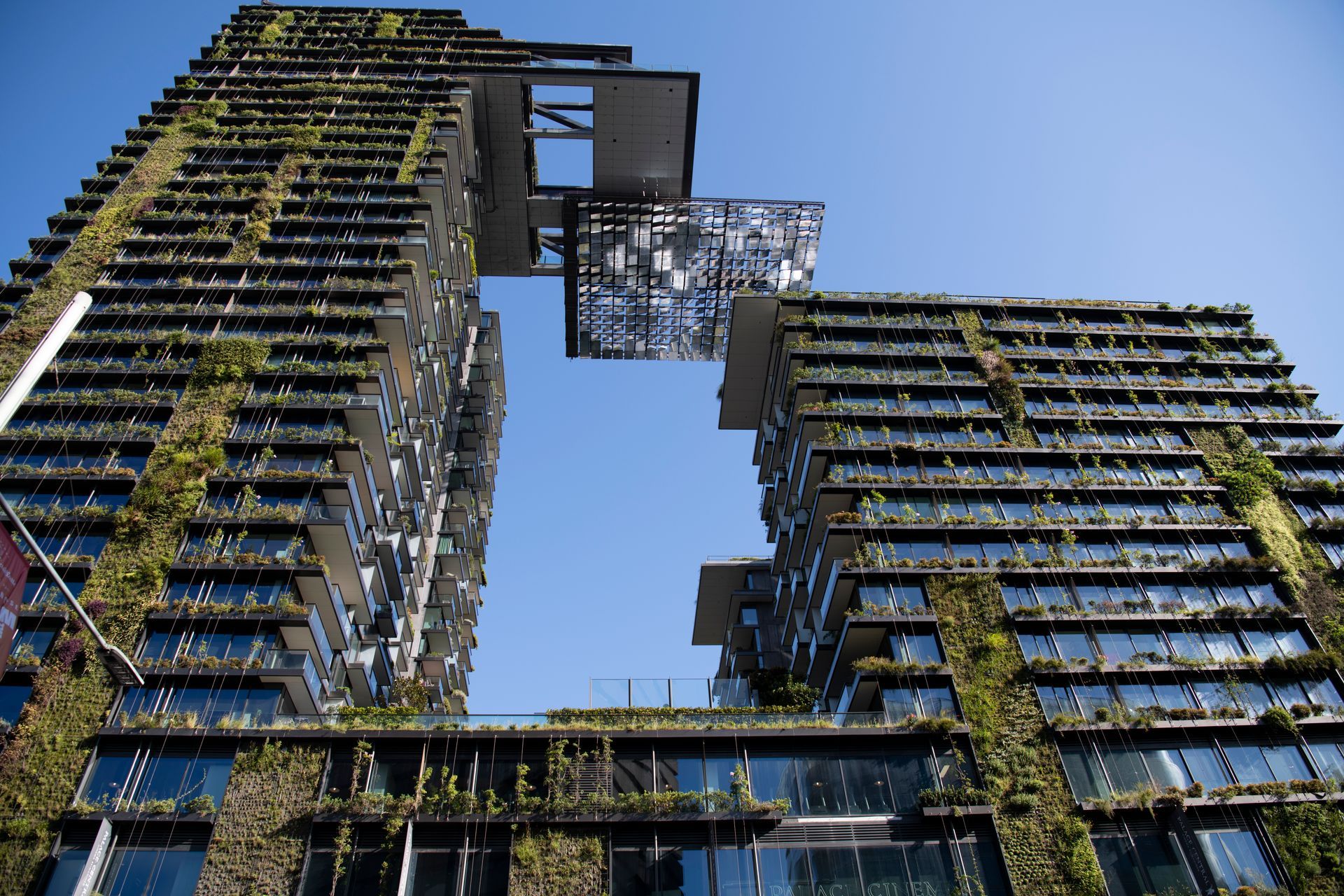1MG FlippingBooks
The Tech Cooling Australia’s Urban Heat Islands
By Aoife Hilton
Since the earliest records, Australia’s average temperatures have warmed by 1.44 degrees each year – but not every Australian is feeling the heat equally.

The “urban heat island effect” is a phenomenon whereby the temperature in a city rises above temperatures in surrounding rural areas. Paved over with materials that absorb solar radiation as heat, cities retains an average of 1-3 degrees more heat than surrounding areas during the day and up to 12 degrees more in the evening – but, thanks to science, there are ways to cool down.
Green walls
One straightforward approach to addressing the urban heat island effect is planting more trees; they provide shade, cover asphalt and concrete, and cool the atmosphere by absorbing water. However, they also take up space – space that isn’t always available.
The ideal solution? Vertical gardens, otherwise known as green walls. These can be installed on the sides of buildings to provide the benefits of foliage without the space requirements, preventing surrounding concrete from overheating and lowering the air temperature via evapotranspiration.
Installing a green wall isn’t as simple as sticking a few plants in a layer of dirt and turning it sideways. After the plants have been prepped, green walls also require irrigation, pumping, and electrical work to be installed.
Reflective roofs
Dark-coloured roofs on houses and other buildings absorb solar radiation as heat, contributing to higher air temperatures. Eco-conscious urban designers suggest painting roofs white, while others insist that other surfaces including car parks and even roads should be painted, and some are heeding the call. For example, a Purdue University-led team has created a white paint that increases sunlight reflection and can cool daytime surfaces by up to four degrees. Meanwhile, the local government in Phoenix, United States, has funded programs to cover rooves and pavements with a light-reflecting chemical.
Water-absorbing pavers
On the surface, using water for urban cooling seems simple: cold water is…well, cold, and water reflects solar radiation back into the atmosphere. While canals and ponds have a limited effect on urban heat islands, innovative water features present an opportunity to integrate water into man-made city structures.
Inspired by water fountains using moving water to create a cooling spray, modern urban designer have created archway-shaped drinking fountains and mist-spraying bus stops.
New Urban Standard, in collaboration with Tilesystems and Koers, has also developed water-absorbing clinkers for paving. The bricks absorb the water during heavy rain and allow it to evaporate as the temperature rises, releasing water particles into the air and lowering the temperature.
Passive cooling design
The small innovative updates used to cool urban heat islands can also apply to city planning on a larger scale. For example, city planners should consider the cooling virtues of varying building heights to encourages air flow. They may also use “digital twins” to map urban spaces, analyse which areas suffer most from the heat island effect, and ultimately decide where to prioritise their cooling efforts. In the early planning stages, planners should aim to create walkable neighbourhoods, decreasing reliance on roads and increasing available space for greenery and footpaths.










